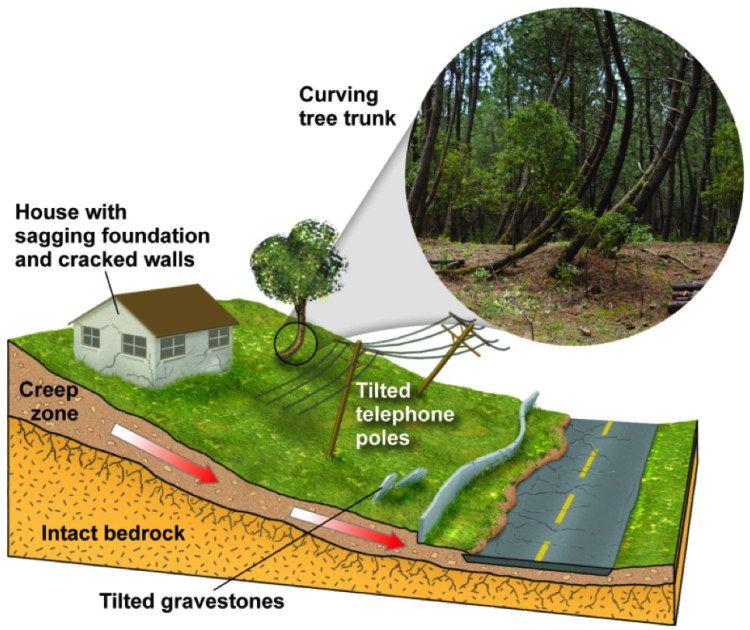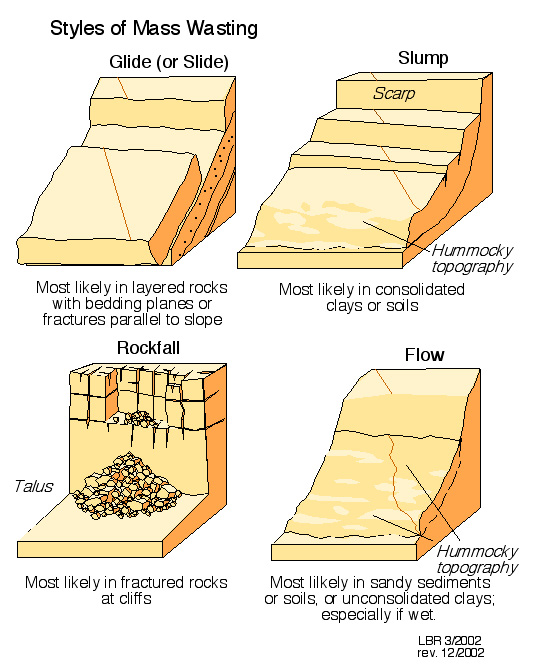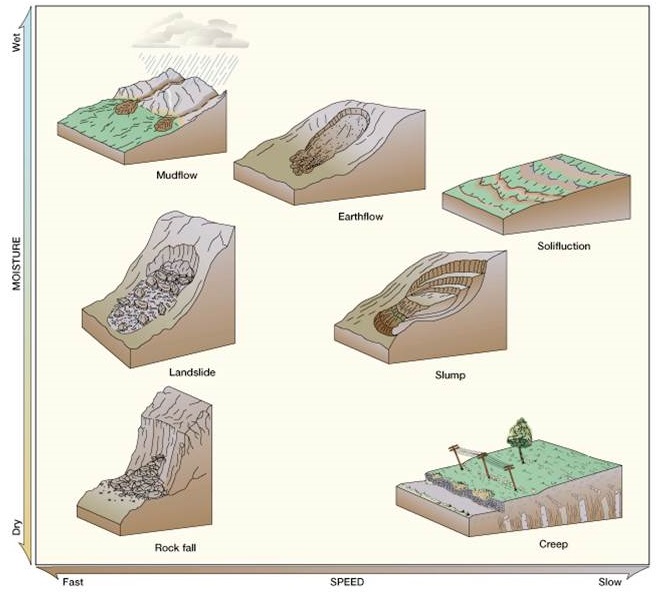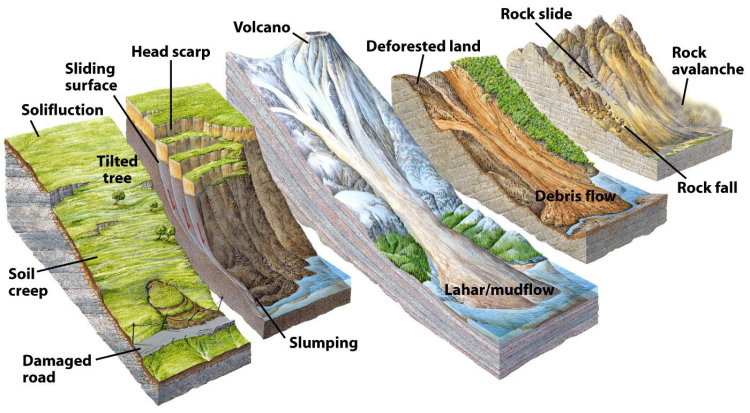Most trail construction should take place on slopes, not flat ground, and should proceed with the best practices of road construction engineering, yet depending on the user groups it won’t have quite the same load requirements or factors of safety required for roads (local requirements or regulations pending).
How steep is too steep before a retaining wall or crib wall are needed, and could the slope handle that load in addition to live/dead surcharges? What if the slope is saturated, how will that change the soil’s cohesive (or maybe adhesive soil/rock) forces or shear potential? Are tension cracks or any signs of wasting apparent? What geological discontinuities exist? Is trail alignment better off at the summit, shoulder, backslope, foot or toe? It’s usually not the toe, but you have to climb at some point. How wide of a bench is too wide given the soil type, and will it increase the likelihood of slope failure? What factor of safety is desired? Should colluvium or taluvium be traversed? How can builders lessen the likelihood of traversing an unstable slope, and is it necessary to test every square inch along the layout and use a civil engineer?
Some of these questions can be answered with desk studies, ground investigations, and field mapping. LIDAR can help identify historical slope failures that might not be obvious in the field. Thankfully the surcharges on trails aren’t as large as on roads, but it’s not as if the same principles and best practices don’t or shouldn’t apply. Some insights can be found here: Slope Engineering for Mountain Roads).
- In layered soils with plane surfaces of sliding near the slope angle transitional slides (see below) are usually observed (often with steeper slopes)
- For relatively flat slopes or homogeneous soils with no leading planes of weakness, the surfaces of sliding are almost always curved, or rotational. (see below)
- Slope Stability: PDF 1
- Slope Stability: PDF 2
- Basic mechanics of soils
- Earth Pressure Coefficients – Types, Concept & Theory
- To Determine Liquid Limit of Soil & Plastic Limit of Soil
- Slope Stability Reference Guide (for National Forests)
- Surcharge Load Decisions for the Competent Person
- USGS Groundwater Data for the Nation
- Landslide Types and Processes PDF
- Slope Stability, Triggering Events, Mass Movement Hazards
- 30 hours of geotechnical lectures
- Geoslope slope stability software
Types of Slope Failure or Wasting
| Type of movement | Type of material | ||||
| Bedrock | Engineering soils | ||||
| Predominantly fine | Predominantly coarse | ||||
| Falls | Rockfall | Earth fall | Debris fall | ||
| Topples | Rock topple | Earth topple | Debris topple | ||
| Slides | Rotational | Rock slump | Earth slump | Debris slump | |
| Translational | Few units | Rock block slide | Earth block slide | Debris block slide | |
| Many units | Rock slide | Earth slide | Debris slide | ||
| Lateral spreads | Rock spread | Earth spread | Debris spread | ||
| Flows | Rock flow | Earth flow | Debris flow | ||
| Rock avalanche | Debris avalanche | ||||
| (Deep creep) | (Soil creep) | ||||
| Complex and compound | Combination in time and/or space of two or more principal types of movement | ||||
Signs of Creepiness
Rotational slides:
more on rotation
Transitional slides:
more on transition


